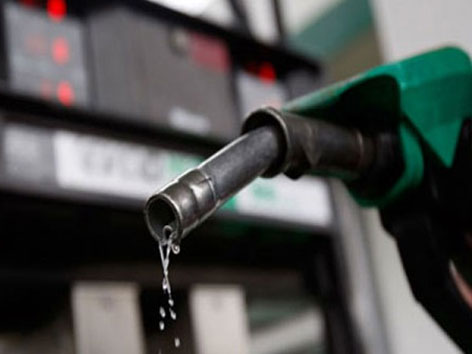ISLAMABAD: The government has announced significant fuel price hikes effective July 16, 2025, with petrol increasing by Rs5.36 per litre to Rs272.15 and high-speed diesel rising by Rs11.37 per litre to Rs284.35.
The Finance Division stated these revised prices follow recommendations from the Oil and Gas Regulatory Authority (Ogra) and relevant ministries, while kerosene and light diesel oil prices remain unchanged.
The increases come despite a noticeable decline in global oil prices, which begs the question, why? Industry sources attribute the domestic hike to a combination of geopolitical tensions, rupee depreciation, and IMF-imposed fiscal conditions. But how viable is that explanation? To answer that question, let us dive into the numbers.
The Iran-Israel conflict has had a particularly significant impact on the global oil economy, with the premium on petroleum imports surging from $5 per ton to $9.06 per ton. Pakistan State Oil (PSO) was additionally compelled to pay war risk premiums on fuel imports during this conflict, which further escalated the costs.
Currency depreciation added another layer of financial strain, with the Pakistani rupee’s weakness against the US dollar estimated to have increased consumer prices by approximately Rs2 per litre. For high-speed diesel specifically, the government raised the previously reduced inland freight equalisation margin by Rs4 per litre, contributing to the price escalation. This effect was partially seen in the price hike at the start of the month.
Meanwhile, the government’s options for keeping this price steady have been further constrained by International Monetary Fund (IMF) reform conditions. While officials considered reducing the petroleum levy to offset price pressures, the IMF rejected any flexibility in levy targets agreed under its program.
Industry sources have confirmed, however, that there was no increase in the petroleum levy or other taxes on petroleum products in this pricing round.
The current price structure already reveals a significant tax burden on consumers. For petrol, the ex-refinery price before duty stands at Rs153.41 per litre, with 10% customs duty adding Rs15.33. Additional costs include Rs8.89 for inland freight, Rs7.87 for the oil marketing company margin, Rs8.64 as dealer commission, Rs75.52 as petroleum levy, and Rs2.50 as climate support levy. The tax component totals Rs93.35 per litre, accounting for 34% of the final price.
| No. | Formula Component (MS) | Weightage (%) | Price | Explanation |
|---|---|---|---|---|
| 1 | Ex-Refinery Price | 62.00% | 168.73 | This is the cost at which refineries sell petrol to oil marketing companies (OMCs) like PSO, Shell, and Total. The Oil and Gas Regulatory Authority (OGRA) sets this price, based on the import parity price (IPP) formula, which takes the average price of Arab Gulf Gasoline (92 RON) and adds import costs and surcharges to reflect the cost of importing petrol. |
| 2 | FEM | 3.27% | 8.89 | This is a margin added to ensure a uniform price across the country. Without FEM, petrol prices in cities far from refineries would be much higher than in cities close by. |
| 3 | Distributor Margin | 2.89% | 7.87 | Maximum profit per liter that OMCs can earn, as set by the government. |
| 4 | Dealer Commission | 3.17% | 8.64 | A maximum commission that petrol pump owners can earn per liter, as set by the government. |
| 5 | Petroleum Levy | 27.75% | 75.52 | Tax collected by the government, with the rate set by the Ministry of Energy. |
| 6 | Climate Support Levy | 0.92% | 2.5 | A carbon levy introduced on petroleum products under the IMF’s RSF directives. |
| Ex Depot Price | 100% | 272.15 |
High-speed diesel follows a similar pattern, with an ex-refinery price before duty of Rs168.40 per litre and 10% customs duty of Rs16.40. Combined with inland freight, margins, and levies, the final price reaches Rs284.35 per litre, with taxes comprising Rs93.41 or 33% of the total cost.
Other fuel prices include kerosene at Rs181.33 per litre with a petroleum levy of Rs18.95, light diesel oil at Rs167.76 per litre, and aviation fuels priced around Rs181.50 per litre including 18% GST. E-10 petrol is priced at Rs269.65 per litre, where taxes make up 35% of the cost.
Coming back to the question, why a second hike? “Even though international markets showed a downtrend in petroleum prices, the combined effect of the war premium, rupee depreciation, and IMF commitments has deprived Pakistani consumers of any significant relief,” commented a source familiar with the matter.
The source commented that a delayed impact of global price changes in Pakistan reflects the government’s decision to split the price hikes rather than fully pass them through to consumers during its July 1st revision. Experts suggest this approach was driven by concerns over public perception, particularly following the poorly received budget the previous month.
Moreover, the effect of a global price shock like a war cannot be immediately transferred in numbers due to procurement delays especially for a country like Pakistan that cannot afford to have a large enough strategic oil reserve.
However, the fact remains that this domestic pricing strategy occurs against a backdrop of declining global oil prices, and is not great in terms of optics.
In fact, Morgan Stanley analysts highlight a key paradox: “For all the seriousness and severity of the current conflict, oil prices are actually down about 20 percent relative to a year ago. This simply puts current conditions in a very different category than those other periods, be they the 1970s or more recently, Russia’s invasion of Ukraine that represented genuine oil price shocks.”
The analysts attribute this trend to robust global supply conditions, explaining that “oil markets do have very healthy levels of supply, which is helping to cushion these shocks.”
With the global reliance on gasoline as a transport fuel slowly reducing, oil prices are expected to go further down in the next decade unless anomalous events like wars happen.
One thing though, can be said for certain. The fuel prices, are likely to be reduced in the coming revisions as global price pressures ease out, or if anything this could be the government’s way of inculcating the new IMF levy requirements and carbon tax, in an already inflated fuel price.
Efforts were made to obtain the official stance of the Petroleum Minister, Secretary Petroleum, and Pakistan State Oil (PSO). However, despite repeated attempts, no official response was received till the filing of the story.




